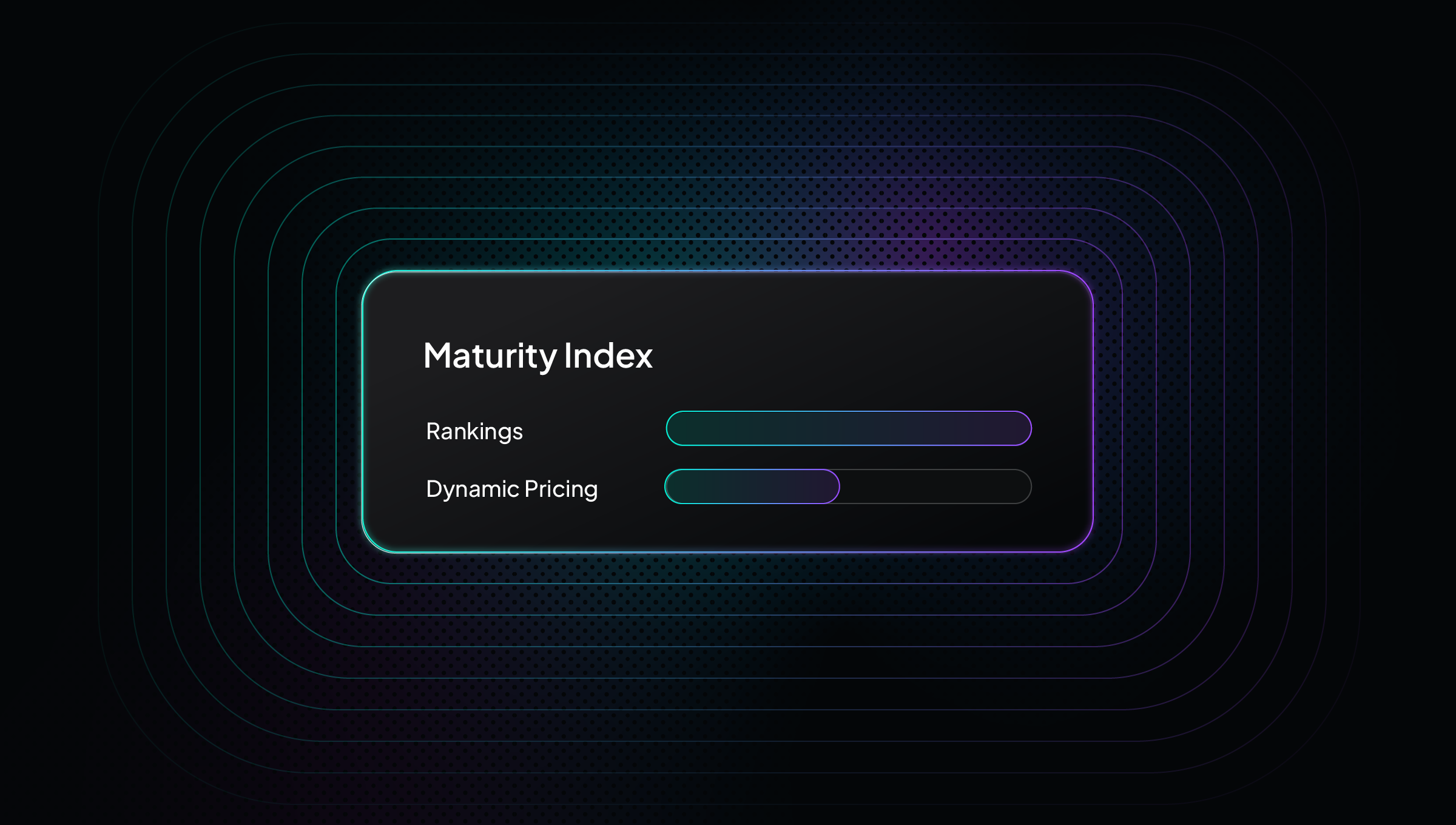The Smartproxy eCommerce Maturity Index sets out to provide a comprehensive picture of eCommerce websites around the world by assessing two major aspects:
The following sections detail our methodology, including data collection and analysis.
The eCommerce Maturity Index offers a granular evaluation of the customer and user experience of eCommerce websites from all five continents. The final index includes 40 countries and considers 28 criteria covering 5 areas that relate to stages in the customer journey, from finding to purchasing products. Those areas are:
For data collection, we manually selected 3 eCommerce websites per country. Websites were selected based on their local or regional relevance. Relevance was determined by using website traffic as a proxy.
First, we would select 3 locally relevant eCommerce websites, which are based in the pertaining country. If this was not possible, we would substitute with regionally relevant eCommerce websites that operate across borders in these regions, as was the case for countries in the Benelux and the Baltics. Only if locally or regionally relevant eCommerce websites could not be identified would we resort to including the most relevant large global players in a specific country market.
The guiding premise was to avoid including global multinational eCommerce websites to reflect a country’s eCommerce maturity as closely as possible.
Browsing captures the ease by which products can be found and saved for later. With a focus on the quality of search, product indicators, filtering, and wish list functionality:
Reviewing captures the possibilities of finding out more about the functionality and specifications of a product, comparing, asking questions, finding reviews from clients and experts, and directly communicating with customer service. Advanced features were not applied in the Fashion category.
Investigating captures whether an eCommerce website provides background information on its products, such as product warning and safety information, sustainability and recycling, and ethical sourcing.
Expanding captures the extent to which customer are provided with options to add additional services, finance their purchase, or bundle it with related products. Advanced features were not applied in the Fashion category.
Decisions category captures the extent to which an eCommerce platform makes it easier to find out about and select between multiple delivery options, determine inventory availability, and set restock and price alerts, as well as find additional information on pricing and return policy.
After manually reviewing for the presence of all features and coding them with 1 (present) or 0 (partially present or absent), we created percentage scores for each area by dividing the number of present features by the number of all features multiplied by 100.
This provided us with scores representing the maturity in each dimension from 0 to 100.
The final index score was created based on an equal weighting average across all dimensions.
The eCommerce Dynamic Pricing usage score reflects the extent to which eCommerce websites around the world use and incorporate dynamic pricing practices in their business while also taking into account the complexity of these pricing practices. The data collection and analysis included data from 40 countries and 120 websites, each featuring 12 products, which were retrieved at regular four-hour intervals over a one-month period with the Smartproxy eCommerce Scraping API. The final score takes into account:
The eCommerce Dynamic Pricing Index data collection took place over 33 days from April 25th to May 27th. In that period, we tracked pricing changes of 12 hand-selected products, comprised in equal proportions of high and low-value products. Price tracking and item name extraction were automated using the Smartproxy eCommerce Scraping API.
The study focused on 40 countries, and the top three eCommerce websites in each country were selected based on visits and revenue. For each website, three categories were selected from a website's front page. Within each category, four products were chosen. Two high-value and two low-value. This approach resulted in 36 products per country.
The data collection script was executed every four hours, resulting in eight data captures per day and a total of 264 scraping sessions. Over the 33-day period, a total of 245833 price data points were successfully collected.
After data cleaning, including manual and semi-automated data review, failed response removal, and finally, data formatting, the analysis proceeded in two ways.
First, data on each tracked product was turned into price change plots that visually captured pricing changes within the price tracking period.
Manual review and complementary research on dynamic pricing models were used to develop the Dynamic Pricing framework. This framework captures key pricing models based on which price change patterns were classified. The key pricing models are:
Following the construction of the dynamic pricing framework, the collected pricing data points were analyzed to derive scores for each dimension and then constructed from the dimensions of each country’s overall score. The country scoring system assesses the usage and complexity of dynamic pricing in each country and features 3 key components that are normalized on the average and then weighted equally to derive the overall score.
*Higher complexity models include consistent micro pricing adjustment (1 point), supply-demand adjustment (1 point), automated pre-set changes (2 points), real-time adjustment (2 points). Lower complexity model was scored with 0 points.
*Higher complexity models include consistent micro pricing adjustment (1 point), supply-demand adjustment (1 point), automated pre-set changes (2 points), real-time adjustment (2 points). Lower complexity model was scored with 0 points.
Smartproxy eCommerce Maturity Index was developed to offer a deep-dive into eCommerce maturity and dynamic pricing practices worldwide. This index provides a unique perspective on the competitive landscape and pricing strategies of 40 countries across all continents, enabling businesses to gain valuable insights and make informed decisions in a global market.

Dive deeper into our report and uncover key findings in the eCommerce landscape.
Get personalized insights from the eCommerce Maturity Index by contacting us.
[email protected]
© 2018-2024 smartproxy.com, All Rights Reserved